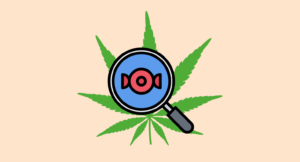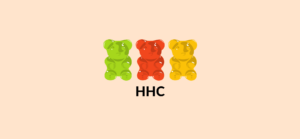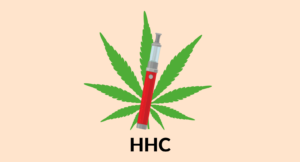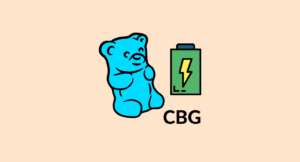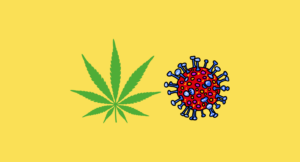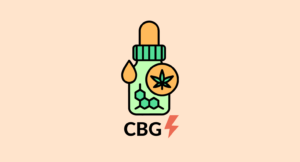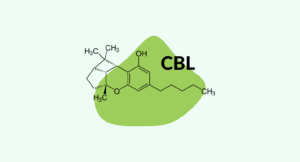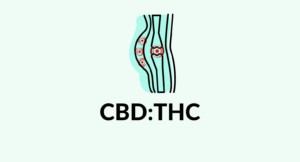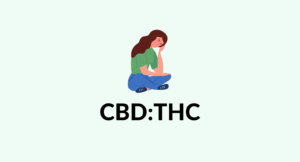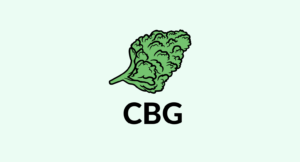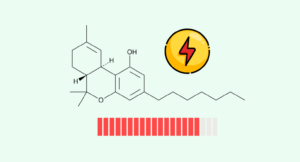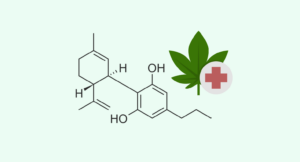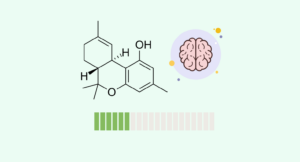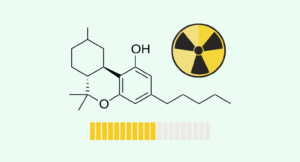Evidence based
What is Decarboxylation? How Does it Work?
“Decarbing” is the process of activating your weed.
There are several ways of decarbing weed effectively.
Here’s how it works.
Contrary to what you might have seen on television, if you were to eat an entire bag of raw weed, you wouldn’t feel anything.
So what gives? Why does weed only work when it’s smoked, vaped, or baked?
The answer is decarboxylation, which activates the psychoactive effects of weed through exposure to high heat (such as a flame).
The same goes for edibles. At some point during production, cannabis needs to be heated to at least 80ºC (175ºF) in order for it to become active.
Here’s how decarboxylation works.

What is Decarboxylation?
In simple terms, decarboxylation refers to the “heat activation” of raw cannabinoids (such as THCA, CBDA, CBGA, or CBCA).
This process converts these molecules to their active forms by removing the carboxylic acid group attached to one side (COOH). Cannabinoids that still have this molecule attached are referred to as THCA (tetrahydrocannabinolic-acid), CBDA (cannabidiolic-acid), CBGA (cannabigerolic-acid), CBCA (cannabichromic-acid), and so-on.
The cannabis plant makes all cannabinoids in the acidic form — hence why these compounds are only found in raw cannabis extracts.
Decarboxylation occurs at temperatures of 80ºC (175ºF) or higher. The added heat causes the bonds holding the carboxyl group to break apart and fall off.
Why Do Cannabinoids Need to be Heat Activated?
The carboxylic acid found on raw cannabinoids gets in the way and prevents them from attaching to our endocannabinoid receptors. This blocks many of the therapeutic and psychoactive effects of these molecules.
Only once this additional group is removed can cannabinoids freely bind and interact with the endocannabinoid system, TRP ion channels, and various other receptors and enzymes around the body.
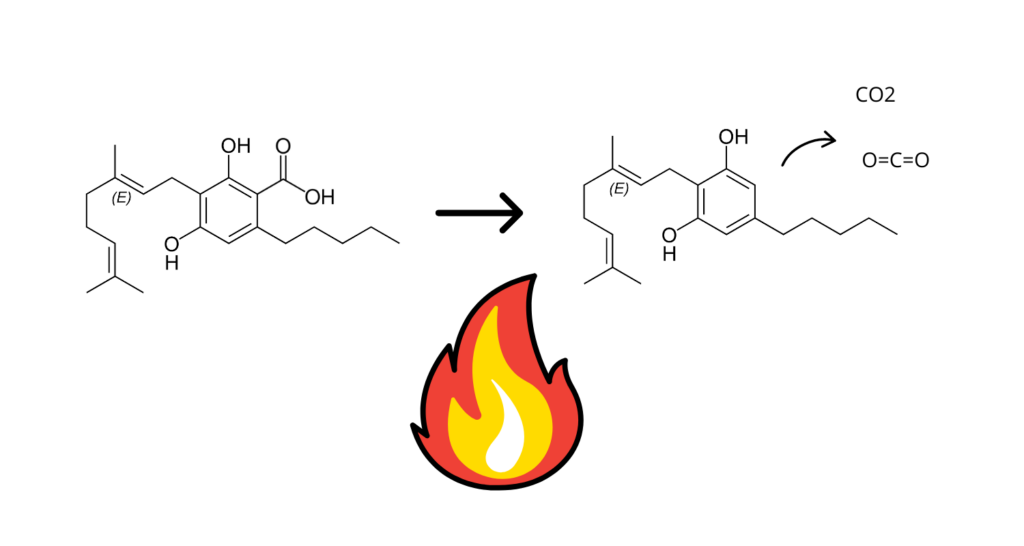
What Causes Decarboxylation?
There are two factors that affect the decarboxylation of cannabinoids — heat and time.
Once marijuana plants are harvested, the decarboxylation process begins immediately. As the flower dries out, some of the THCA is converted to THC. The same happens for CBDA and CBGA as well. However, this process can be very slow — sometimes taking a year or longer to decarboxylate just 40% of the cannabinoids.
The fastest and most thorough way of decarboxylating cannabinoids is to expose them to heat. This is most often done by smoking, vaping, or baking marijuana.
What Temperature is Needed For Decarboxylation?
Decarboxylation of cannabis doesn’t require a specific temperature — however, as more heat is applied, decarboxylation happens more quickly.
The sweet spot for decarboxylation is around 105–130ºC (220–265ºF). At this temperature, it will take about 30 minutes to decarboxylate over 95% of the THCA, CBDA, and CBGA.
It’s possible to decarboxylate cannabinoids in much less time by adding more heat. For example, at 145ºC (295ºF), virtually all cannabinoids are decarboxylated within about 3 minutes. The heat from a flame is around 2,245ºC (4,074ºF). At this temperature, complete decarboxylation takes place within just a few seconds. This is why smoking weed has psychoactive effects despite being exposed to heat for just a second or two.
The reason why experts consider the decarboxylation sweet spot to be around 120ºC (250ºF) is that excessively high temperatures will do more than just decarboxylate cannabinoids. Very high temperatures will destroy many of the valuable components of marijuana — including terpenes. It will also degrade a lot of the THC into CBN, which is only about 10% as psychoactive.
Decarboxylation using gentle heating is ideal — whenever possible. Applying lower heat for longer periods of time preserves other therapeutic components of marijuana and hemp, such as terpenes, and maximizes the potency of the final product.
Decarboxylation of CBDA, THCA, & CBGA
A group of researchers at the University of Mississippi mapped out the approximate efficiency of decarboxylation of CBD, THC, and CBG at different temperatures (80ºC, 95ºC, 110ºC, 130ºC, and 145ºC) [1].
Here’s what they found:
THCA to THC Decarboxylation
Activation Energy: 88 kJ/mol
THCA required the least amount of energy to decarboxylate and had the highest efficiency (least loss due to the formation of unwanted byproducts). The ideal decarboxylation temperature is around 110ºC (230ºF), resulting in over 95% decarboxylation after 25 minutes.
CBDA to CBD Decarboxylation
Activation Energy: 112 kJ/mol
CBDA required the most input energy for decarboxylation of the three, but the efficiency was significantly higher than CBGA — resulting in about a 15% loss during the decarboxylation process. CBDA also appeared to be more resistant to overheating than CBG.
CBGA to CBG Decarboxylation
Activation Energy: 109 kJ/mol
CBGA had the lowest conversion efficiency of the three — resulting in a loss of nearly 50% due to the formation of unwanted byproducts. The poor efficiency of decarboxylating CBGA to CBG is one of the reasons why this cannabinoid is so much more expensive than other cannabinoids.
Raw Cannabis vs. Decarboxylated Cannabis: What’s The Difference?
The cannabis plant produces all of its cannabinoids in their raw, acidic forms — CBDA, THCA, CBGA, CBCA, and so on.
Once harvested, the flowers are dried and cured. By the time this process is done, around 10–15% of the cannabinoids will have already been decarboxylated. Most of the time, manufacturers will finish the job by exposing the cannabis flower to heat and then extracting the active cannabinoids (or vice-versa).
However, some manufacturers have been skipping the decarboxylation step altogether, and some are even taking extra measures to actively avoid decarboxylation. You’ll often find these products labeled as “raw hemp extracts” or simply “CBDA oils” or “CBGA oils.”
What’s the reason for this? Are there advantages to using raw cannabinoids over their decarboxylated counterparts?
The answer for this can vary depending on which cannabinoid you’re looking at.
THCA vs. THC
The main difference between THC and THCA is that THCA (the raw form) is non-psychoactive, while THC (the decarboxylated form) is psychoactive. No matter how much THCA you take, it’s not going to make you high.
If you’re looking for recreational marijuana products, you’ll likely want to avoid THCA and opt for the decarboxylated version instead (or simply ensure you heat your weed by smoking, vaping, or baking it first). This is the most common form of THC, so you won’t have to look very far to find it.
However, if you’re using THC for its many health benefits but don’t want to get the psychoactive effects, opting for a raw THCA product might be a good option to consider.
Despite the fact that THCA can’t bind to the CB1 receptors the same way as THC (which produces distinct psychoactive effects), it does share many of the other effects associated with THC.
For example, THCA has been shown to possess notable anti-inflammatory benefits [2] and may offer protection against neurodegenerative disorders [3] and fatty liver disease [4].
CBDA vs. CBD
The difference in effects between CBD and CBDA are subtle, but some early research suggests CBDA could offer stronger therapeutic actions for certain conditions than conventional CBD. The reason for this comes down to the way these cannabinoids bind to receptors. The added carboxyl group helps CBD attach to some receptors or enzymes, such as COX-2 [6], 5-HT1A [7] — but makes it harder to bind to others, such as TRPV1 or TRPA1 [9].
Much like CBD, CBDA has shown promising results in alleviating inflammation [6], nausea [7], and cancer [8]. There’s also some evidence that CBDA acts as a cell-entry inhibitor for the SARS-CoV-2 virus [10].
With that said, research on CBDA is still in its infancy. The specific differences in effects between CBDA and CBD aren’t quite clear, but from what’s available so far, CBDA looks like a promising and abundant alternative to CBD for managing more or less the same health conditions.
Related: Top-Rated Raw CBDA Oils & Gummies.
CBGA vs. CBG
CBGA is the starting point for just about all other cannabinoids in the cannabis plant. Enzymes convert CBGA into THCA, CBDA, or CBCA. These are then eventually decarboxylated into THC, CBD, and CBC.
Like other forms of cannabinoid acids, CBGA is poorly studied despite the fact that we’ve known about it for more than 50 years now. There are only a few studies examining this cannabinoid so far, and most of them are either animal studies or in vitro research — neither of which offer sufficient evidence to make any claims for what it can or can’t do.
With that said, the research that’s been published so far suggests CBGA offers very similar effects to CBG (to nobody’s surprise). It’s possible that the change in chemical structure from this cannabinoid could give it some advantages over CBG.
For example, preliminary (simulation) research suggests CBGA could have a greater binding capacity for PPAR receptors than CBG or CBD [5]. The results showed CBGA may act as a full PPARα and partial PPARγ agonist. Comparatively, both CBDA and CBG both appeared to offer only partial PPARα/PPARγ agonistic activity. This is important because dysfunctional PPAR activity is associated with metabolic disorders, including diabetes, high cholesterol, and dyslipidemia.
This could suggest CBGA as a potential treatment for metabolic and neurodegenerative disorders, but more research is necessary.
Related: Top-Rated Raw CBGA Oils.
How to Decarboxylate Your Weed
Decarboxylating weed is simple — all you need to do is expose your hemp or marijuana flower to heat and give it enough time for the process to complete on its own.
The trick is to apply the right combination of heat and time. Too much heat or too much time will result in a weaker final product due to terpene and cannabinoid degeneration. Too little will also result in weaker effects due to less decarboxylation of inactive cannabinoids.
The more heat you use, the less time you have to wait for decarboxylation to complete. So if time is available, it’s better to use lower heat for a longer period of time. However, if in a hurry, decarboxylation can be done very quickly through higher temperatures.
1. Use a Dry Herb Vaporizer
One of the best ways to decarboxylate cannabinoids is to use a dry herb vaporizer.
These devices are designed to heat dried hemp or marijuana flower to activate them and convert them into an inhalable vapor.
As a result, you’ll get a much more efficient decarboxylation with these devices compared to smoking — which ends up destroying many of the active cannabinoids you’re trying to consume.
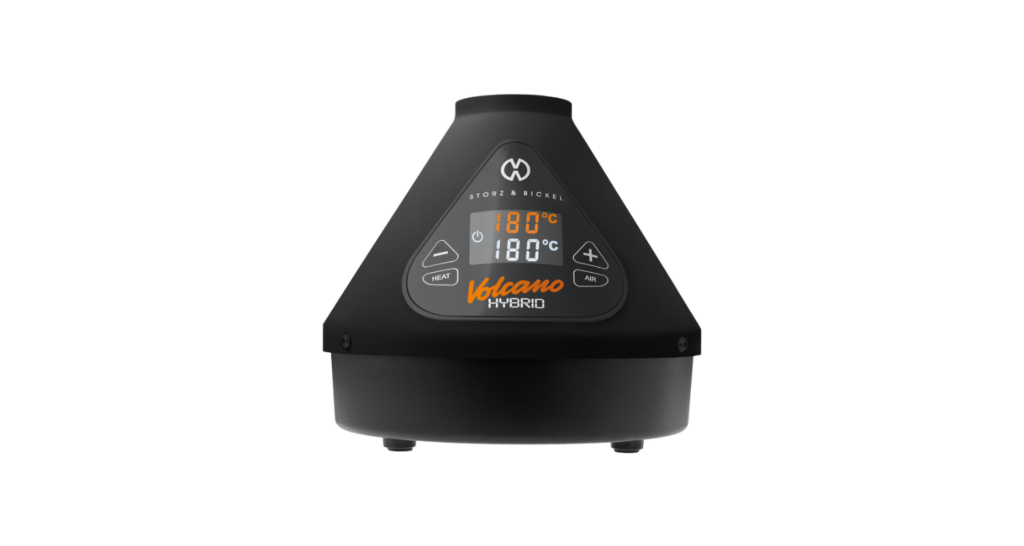
Most devices have temperature control settings, so you can choose the optimal temperature based on your individual preference. The normal range for operating a dry herb vaporizer is between 180 and 230ºC (350-445ºF).
If you keep your temperature on the lower end of the spectrum, you’ll be able to preserve much more of the beneficial terpenes that are also contained in marijuana flower.
If you crank the temperature up, you’ll get a much faster decarboxylation, and thicker vapor with each inhale, but you’ll also lose some of the cannabinoids and terpenes.
Most people who use vapes will start with a lower temperature first before gradually increasing the temperature throughout the session to get the most out of their weed. Start at 180ºC (350ºF) and increase by 10 degrees every few minutes.
The best part about using dry herb vapes is that you can reuse the vaped weed by making cannabutter or baked goods later.
2. Smoke It
Smoking cannabis is the tried and true method of using cannabis in any form. The flame from a lighter can easily exceed 2000ºC (3600ºF), which is more than enough heat to instantly decarboxylate any cannabinoid it touches.
Unfortunately, smoking weed also generates a lot of harsh chemical byproducts like carbon monoxide, which aren’t great for your health. Burning marijuana at this temperature will also invariably destroy some of the cannabinoids, terpenes, and other phytochemicals that contribute to the overall effects of cannabis.
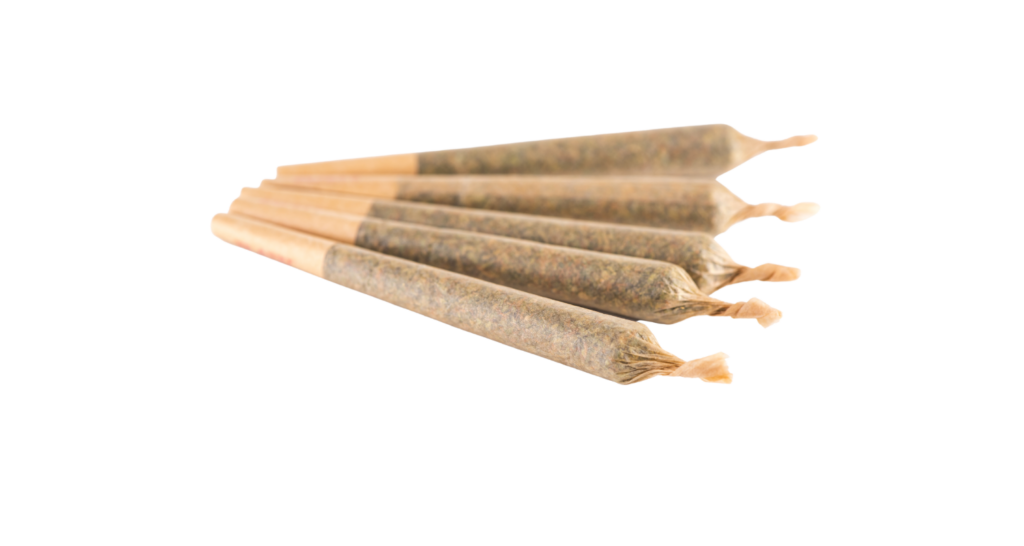
With that said, smoking cannabis certainly works for decarboxylation and is hands down the simplest and cheapest way of using the plant in its dried form.
3. The Oven Method
If you’re looking to make edibles, you’ll need to find another way to decarboxylate your weed. One of the easiest methods is to bake it in the oven for a few minutes.
To do this, grind your cannabis and spread it out over a baking sheet or silicone matt. Preheat your oven to around 100ºC (210ºF). Once the temperature is reached, place your weed into the oven and set a timer for about 40 minutes.
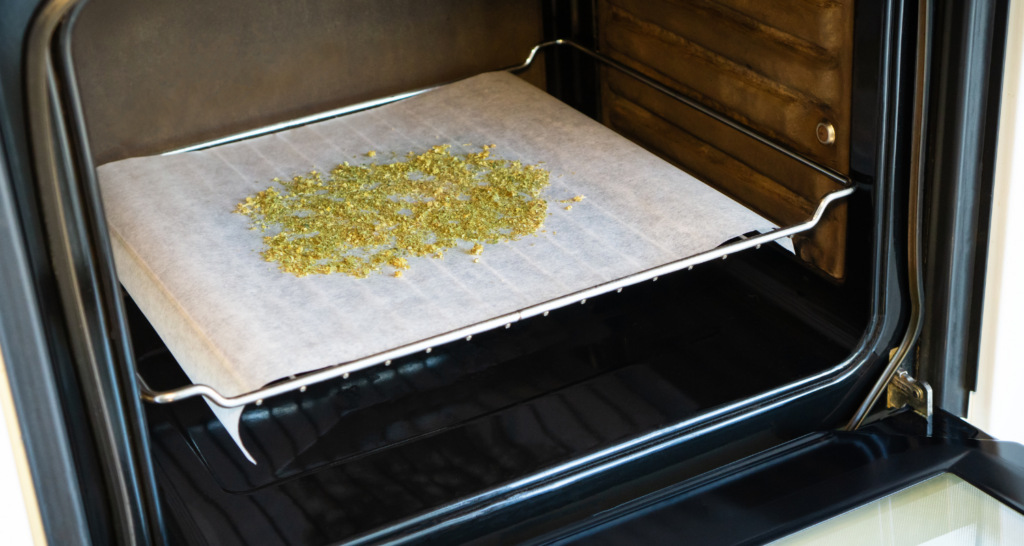
This method works just fine and is the standard process most people use when making edibles from dried and cured weed. However, it doesn’t do a great job at preserving the flavor of the cannabis — most of the terpene will evaporate, and the flower will develop a mild ‘roasty’ aroma.
To further reduce the flavor loss, you can turn the temperature of the oven down, but you’ll need to leave your flower in for longer in order to maximize the decarboxylation efficiency. At 80ºC (170ºF), you should leave your flower in for about 60–80 minutes.
4. The Pressure-Cooker Method (My Personal Favorite)
This method is an improvement on the oven method. It involves placing your ground-up weed or hemp flower into mason jars and then running in a pressure cooker for a few minutes to catalyze the decarboxylation reaction.
The benefit of this method is that the sealed mason jars significantly reduce the loss of terpenes during the process. The final product remains a nice green color and maintains much of its terpene content.
Standard pressure cookers usually have the option for one or two temperature settings. This is controlled by controlling the amount of pressure that’s allowed to build inside before release valves dissipate some of the steam from inside. At the standard 15 psi, pressure cookers will normally maintain around 120ºC (250ºF). Therefore you’ll only need to leave your flower in there for around ten minutes for full decarboxylation.
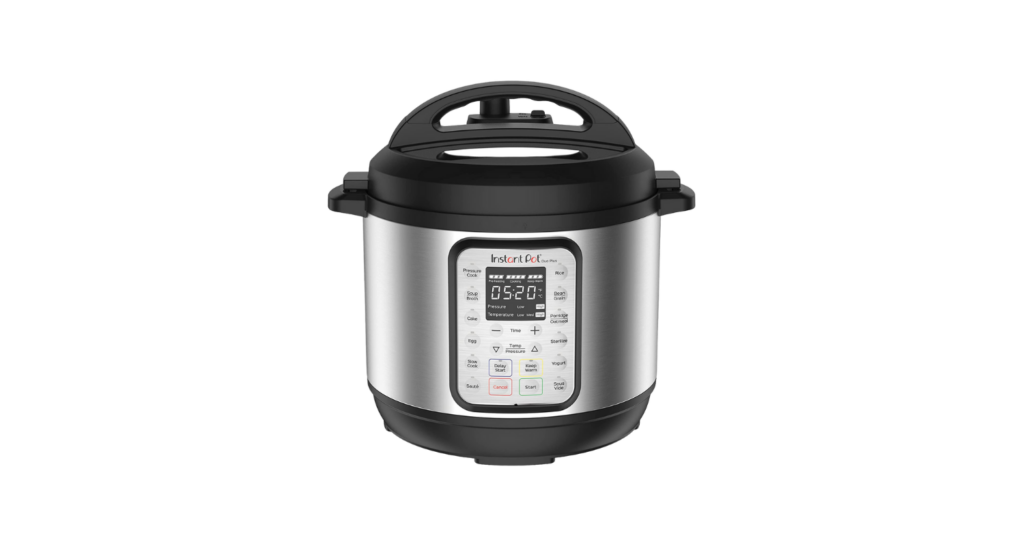
An Instant Pot works great for this as you’ll be able to control the temperature more accurately and set a timer to turn off the device once the limit is reached.
5. Make Cannabutter or Baked Goods
A good way to make edibles is to infuse them into some butter or coconut oil. Part of the process involves heating, which accomplishes the task of decarboxylation.
To follow this method, melt some butter in a pot and add boiling water. It doesn’t matter too much how much butter or water you add because you’re going to separate them later anyway. However, for 1 stick of butter, I would normally add around 3 cups of water.
Next, mix in your weed, hemp flower, or flower that’s been previously vaped.
Turn on the stove until the mixture starts to simmer lightly, then add your flower directly into the water/butter mixture. Let this simmer for about 30 minutes before turning off the stove and allowing the mixture to cool.
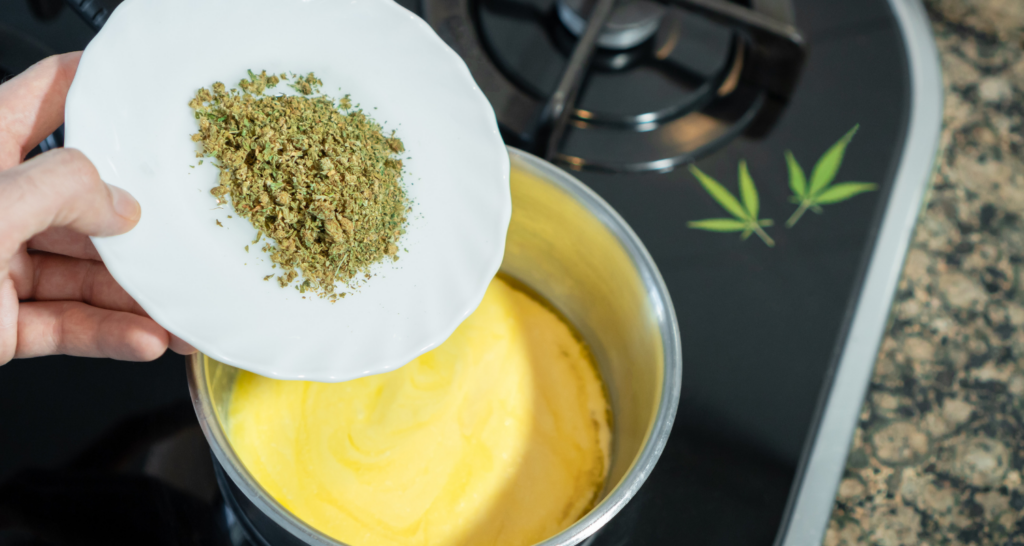
Strain out the weed particles with cheesecloth or fine-mesh strainer, and pour the mixture into a glass tray. Keep this in the fridge overnight to allow the weed-infused butter to separate from the water.
After a few hours, the butter or coconut oil will form a hardened layer on top of the water. All you have to do is scrape it off, toss out the remaining water, and store the cannabutter in a sealed container. Because of the heating process used to make it, your weed butter will already be decarboxylated and ready to use.
Final Thoughts: What is Decarboxylation?
If you’ve ever smoked weed, you’ve already decarboxylated cannabis. The process involves heating cannabis flowers in order to remove a section of the molecule called carboxylic acid.
For non-psychoactive cannabinoids, the differences between decarboxylated forms is less pronounced, but preliminary research suggests the raw, non-decarboxylated forms of CBD and CBG may offer unique differences compared to the standard decarboxylated forms we’re used to seeing.
Where decarboxylation makes a big difference is when we talk about THC or other psychoactive cannabinoids.
THC is not psychoactive until the decarboxylation process is complete. The added carboxylic acid group prevents THCA from being able to bind with the endocannabinoid receptors that produce the characteristic high of marijuana.
Appendix: Decarboxylation Time vs. Temperature Tables
80ºC (176 °F)
| Time (Minutes) | CBD Conversion (%) | THC Conversion (%) | CBG Conversion (%) |
| 0 | 15.52% | 40.28% | 15.38% |
| 6 | 16.79% | 48.27% | 17.39% |
| 12 | 19.46% | 49.04% | 17.71% |
| 18 | 23.85% | 59.02% | 16.84% |
| 24 | 24.54% | 62.26% | 16.84% |
| 30 | 21.57% | 55.48% | 16.33% |
| 36 | 23.78% | 60.48% | 18.09% |
| 42 | 25.88% | 65.20% | 20.22% |
| 48 | 22.54% | 59.18% | 18.56% |
| 54 | 25.62% | 66.47% | 17.39% |
| 60 | 26.91% | 67.01% | 19.57% |
110ºC (230°F)
| Time (Minutes) | CBD Conversion (%) | THC Conversion (%) | CBG Conversion (%) |
| 0 | 15.52% | 40.28% | 15.38% |
| 3 | 19.08% | 48.05% | 19.19% |
| 6 | 25.94% | 61.93% | 25.26% |
| 9 | 35.15% | 75.04% | 30.00% |
| 12 | 45.14% | 84.45% | 38.16% |
| 15 | 53.02% | 88.91% | 46.97% |
| 20 | 63.30% | 92.14% | 57.63% |
| 25 | 73.13% | 96.82% | 63.64% |
| 30 | 78.86% | 97.25% | 74.51% |
| 35 | 82.43% | 97.40% | 93.33% |
| 40 | 86.72% | 97.86% | 97.62% |
| 45 | 89.91% | 98.31% | 97.56% |
| 50 | 89.60% | 98.46% | 97.67% |
130ºC (266°F)
| Time (Minutes) | CBD Conversion (%) | THC Conversion (%) | CBG Conversion (%) |
| 0 | 15.52% | 40.28% | 15.38% |
| 3 | 33.68% | 75.16% | 31.33% |
| 6 | 71.73% | 96.66% | 60.34% |
| 9 | 89.06% | 98.72% | 85.71% |
| 12 | 93.09% | 99.21% | 93.88% |
| 15 | 95.85% | 99.36% | 94.00% |
| 20 | 97.85% | 99.84% | 97.96% |
| 25 | 98.26% | 100.00% | 97.92% |
| 30 | 98.55% | 100.00% | 97.92% |
| 35 | 98.24% | 100.00% | 97.92% |
| 40 | 99.05% | 100.00% | 97.92% |
145ºC (293°F)
| Time (Minutes) | CBD Conversion (%) | THC Conversion (%) | CBG Conversion (%) |
| 0 | 15.52% | 40.28% | 15.38% |
| 3 | 75.55% | 96.58% | 65.38% |
| 6 | 93.58% | 98.88% | 95.83% |
| 9 | 97.77% | 99.23% | 98.11% |
| 12 | 98.68% | 99.84% | 98.11% |
| 15 | 99.21% | 99.84% | 98.08% |
| 20 | 99.34% | 99.84% | 98.04% |
| 25 | 99.86% | 99.84% | 97.92% |
| 30 | 99.17% | 99.84% | 97.87% |
References
- Wang, M., Wang, Y. H., Avula, B., Radwan, M. M., Wanas, A. S., van Antwerp, J., … & Khan, I. A. (2016). Decarboxylation study of acidic cannabinoids: a novel approach using ultra-high-performance supercritical fluid chromatography/photodiode array-mass spectrometry. Cannabis and cannabinoid research, 1(1), 262-271.
- Ruhaak, L. R., Felth, J., Karlsson, P. C., Rafter, J. J., Verpoorte, R., & Bohlin, L. (2011). Evaluation of the cyclooxygenase inhibiting effects of six major cannabinoids isolated from Cannabis sativa. Biological and Pharmaceutical Bulletin, 34(5), 774-778.
- Nadal, X., Del Río, C., Casano, S., Palomares, B., Ferreiro‐Vera, C., Navarrete, C., … & Muñoz, E. (2017). Tetrahydrocannabinolic acid is a potent PPARγ agonist with neuroprotective activity. British journal of pharmacology, 174(23), 4263-4276.
- Carmona-Hidalgo, B., González-Mariscal, I., García-Martín, A., Prados, M. E., Ruiz-Pino, F., Appendino, G., … & Muñoz, E. (2021). Δ9-Tetrahydrocannabinolic Acid markedly alleviates liver fibrosis and inflammation in mice. Phytomedicine, 81, 153426.
- D’Aniello, E., Fellous, T., Iannotti, F. A., Gentile, A., Allarà, M., Balestrieri, F., … & Di Marzo, V. (2019). Identification and characterization of phytocannabinoids as novel dual PPARα/γ agonists by a computational and in vitro experimental approach. Biochimica et Biophysica Acta (BBA)-General Subjects, 1863(3), 586-597.
- Takeda, S., Misawa, K., Yamamoto, I., & Watanabe, K. (2008). Cannabidiolic acid as a selective cyclooxygenase-2 inhibitory component in cannabis. Drug Metabolism and Disposition, 36(9), 1917-1921.
- Bolognini, D., Rock, E. M., Cluny, N. L., Cascio, M. G., Limebeer, C. L., Duncan, M., … & Pertwee, R. G. (2013). Cannabidiolic acid prevents vomiting in S uncus murinus and nausea‐induced behaviour in rats by enhancing 5‐HT1A receptor activation. British journal of pharmacology, 168(6), 1456-1470.
- Takeda, S., Himeno, T., Kakizoe, K., Okazaki, H., Okada, T., Watanabe, K., & Aramaki, H. (2017). Cannabidiolic acid-mediated selective down-regulation of c-fos in highly aggressive breast cancer MDA-MB-231 cells: possible involvement of its down-regulation in the abrogation of aggressiveness. Journal of natural medicines, 71(1), 286-291.
- Takeda, S., Misawa, K., Yamamoto, I., & Watanabe, K. (2008). Cannabidiolic acid as a selective cyclooxygenase-2 inhibitory component in cannabis. Drug Metabolism and Disposition, 36(9), 1917-1921.
- van Breemen, R. B., Muchiri, R. N., Bates, T. A., Weinstein, J. B., Leier, H. C., Farley, S., & Tafesse, F. G. (2022). Cannabinoids Block Cellular Entry of SARS-CoV-2 and the Emerging Variants. Journal of natural products.

